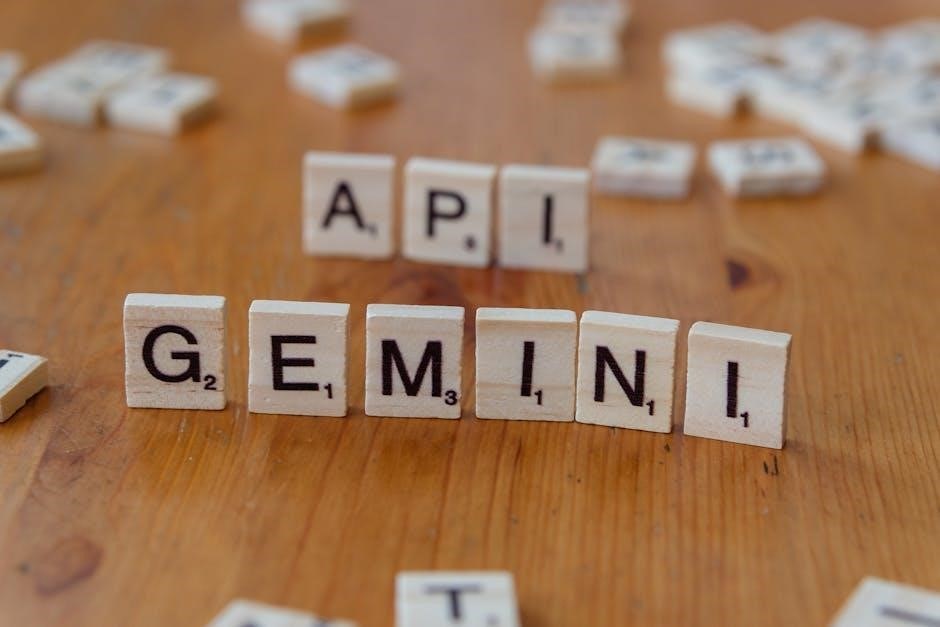hands on large language models pdf
Hands-On Large Language Models PDF: A Comprehensive Guide
Explore the world of LLMs! This comprehensive guide, available as a PDF, delves into understanding & using pre-trained models. Learn text generation & representation, and build semantic search systems!
Overview of “Hands-On Large Language Models”
“Hands-On Large Language Models” is a comprehensive and visually rich introduction to the rapidly evolving field of Language AI. Authored by Jay Alammar and Maarten Grootendorst, this book aims to demystify the complexities of Large Language Models (LLMs) and equip readers with practical skills to leverage their capabilities. It bridges the gap between theoretical concepts and real-world applications, making it accessible to both beginners and experienced practitioners. The book covers a wide range of topics, including the history and latest advancements in LLMs, transformer models, tokenizers, embeddings, and semantic search. It emphasizes hands-on learning through code examples, illustrations, and visual aids, ensuring that readers not only understand the underlying principles but also gain practical experience in building and deploying LLM-powered applications. The authors guide readers through the process of using, training, and fine-tuning LLMs for various tasks, such as copywriting, summarization, text generation, and representation. Furthermore, the book explores advanced techniques like prompt engineering, Retrieval-Augmented Generation (RAG), and multimodal models. With its clear explanations, intuitive examples, and comprehensive code labs, “Hands-On Large Language Models” serves as an invaluable resource for anyone seeking to master the art and science of Language AI and unlock the transformative potential of LLMs.
Authors: Jay Alammar and Maarten Grootendorst
Jay Alammar and Maarten Grootendorst are the esteemed authors behind “Hands-On Large Language Models,” bringing together their diverse expertise to create a comprehensive and accessible guide to the world of LLMs. Jay Alammar is widely recognized for his exceptional ability to explain complex AI concepts in a clear, intuitive, and visually engaging manner. His background in deep learning and natural language processing, combined with his passion for education, makes him a highly sought-after instructor and speaker. He is known for his insightful blog posts and tutorials that have helped countless individuals understand and apply AI technologies. Maarten Grootendorst is a seasoned expert in the field of information retrieval and semantic search. His extensive experience in building and deploying search systems, coupled with his deep understanding of LLMs, enables him to provide practical guidance on creating effective and efficient search applications. He has a proven track record of developing innovative solutions for organizations seeking to leverage the power of AI to improve their search capabilities. Together, Jay Alammar and Maarten Grootendorst form a dynamic duo, combining their unique skill sets to deliver a book that is both theoretically sound and practically relevant. Their collaborative effort has resulted in a valuable resource that empowers readers to master the art and science of Large Language Models and unlock their transformative potential across a wide range of applications. Their combined expertise ensures that readers receive a well-rounded and comprehensive understanding of the subject matter, from the fundamental concepts to the advanced techniques.
Key Concepts Covered in the Book
The book “Hands-On Large Language Models” meticulously covers a wide array of key concepts that are fundamental to understanding and effectively utilizing LLMs. These include, but are not limited to, the intricacies of tokenization, which is the process of breaking down text into smaller units for processing by the model. The book delves into various tokenization techniques and their impact on model performance. Furthermore, it provides a thorough exploration of embeddings, which are numerical representations of words or phrases that capture their semantic meaning. Readers will gain insights into different types of embeddings and how they are used to represent language in a way that LLMs can understand. A significant portion of the book is dedicated to Transformers, the architecture that powers most modern LLMs. The book explains the inner workings of Transformers, including attention mechanisms and self-attention, in a clear and concise manner. Prompt engineering is another crucial concept covered in detail. Readers will learn how to craft effective prompts that elicit desired responses from LLMs. The book also explores the concept of Retrieval-Augmented Generation (RAG), which combines the strengths of retrieval-based and generation-based approaches to improve the accuracy and relevance of LLM outputs. Finally, the book touches upon multimodal models, which can process and generate information from multiple modalities, such as text and images, expanding the capabilities of LLMs beyond traditional text-based tasks. Through these key concepts, the book equips readers with the knowledge necessary to navigate the complex landscape of LLMs and apply them to a variety of real-world problems, fostering a deep and practical understanding of this transformative technology.

Practical Applications of LLMs Discussed
The book highlights various practical applications of LLMs, including copywriting, content generation, and semantic search. Learn how to leverage LLMs for real-world tasks and explore their potential!
Copywriting and Content Generation

Unlock the power of Large Language Models (LLMs) for copywriting and content generation! “Hands-On Large Language Models” explores how pre-trained LLMs can revolutionize the way we create text, from crafting compelling marketing copy to generating engaging articles. This section delves into the practical applications of LLMs in automating and enhancing the content creation process. Learn how to leverage LLMs to overcome writer’s block, brainstorm ideas, and produce high-quality content at scale. Discover techniques for prompting LLMs to generate different types of content, including blog posts, social media updates, product descriptions, and even creative writing pieces. The book provides hands-on examples and code snippets to guide you through the process of using LLMs for various copywriting and content generation tasks. Explore methods for fine-tuning LLMs to match your specific brand voice and style, ensuring that the generated content aligns with your overall marketing strategy. Understand the ethical considerations involved in using LLMs for content creation, such as avoiding plagiarism and ensuring factual accuracy. “Hands-On Large Language Models” empowers you to harness the capabilities of LLMs to create compelling and effective content that drives results.
Semantic Search Systems
Dive into the world of semantic search systems with “Hands-On Large Language Models”! This section explores how LLMs can be used to build search engines that go beyond keyword matching and understand the meaning behind user queries. Learn how to create search systems that can retrieve relevant information based on the semantic similarity between the query and the documents in your index. Discover techniques for embedding text into vector spaces, allowing you to perform efficient similarity searches using vector databases. The book provides practical examples and code implementations to guide you through the process of building semantic search systems from scratch. Explore different architectures for semantic search, including dual-encoder models and cross-encoder models. Learn how to evaluate the performance of your semantic search system using metrics such as precision, recall, and F1-score. Understand how to optimize your search system for speed and accuracy. “Hands-On Large Language Models” also covers advanced topics such as query expansion, relevance ranking, and personalized search; Discover how to use LLMs to understand the context of a search query and provide more relevant results to the user. This section equips you with the knowledge and skills to build powerful semantic search systems that can transform the way people find information.

Learning and Implementation
Unlock the power of LLMs with practical learning! This section focuses on implementation, featuring code examples, visual aids, and clear explanations. Go from zero to expert with hands-on projects!
Code Examples and Implementations
This section provides concrete code examples and practical implementations of large language models (LLMs), enabling readers to translate theoretical knowledge into tangible skills. The code examples are designed to be easy to follow and adapt, allowing users to experiment with different models and techniques. Implementations cover a wide range of applications, including text generation, summarization, semantic search, and more. Readers will gain hands-on experience with popular LLM frameworks and libraries, such as Transformers and PyTorch, and learn how to fine-tune models for specific tasks. The section also includes detailed explanations of the code, ensuring that readers understand the underlying principles and can troubleshoot any issues they encounter. By working through the code examples and implementations, readers will develop a strong foundation in LLM development and be well-equipped to build their own LLM-powered applications. Furthermore, the repository associated with the book contains all the code examples, allowing readers to easily access and run the code on their own machines. The code is well-documented and organized, making it easy to navigate and understand. This hands-on approach is essential for mastering LLMs and applying them to real-world problems. The focus is on practical skills that can be immediately applied, rather than just theoretical knowledge. The implementations are designed to be modular and reusable, allowing readers to build upon them and create more complex applications. The section also includes tips and tricks for optimizing LLM performance and avoiding common pitfalls. By the end of this section, readers will have the confidence and skills to build their own LLM-powered applications and contribute to the growing field of language AI. This practical approach is what sets this book apart from others, making it an invaluable resource for anyone interested in LLMs.
Visual Aids and Illustrations
This section emphasizes the importance of visual aids and illustrations in understanding complex concepts related to large language models (LLMs). The book incorporates over 250 custom-made figures, diagrams, and visualizations to enhance learning and comprehension. These visuals are strategically placed throughout the book to illustrate key concepts, algorithms, and architectures. They provide a clear and intuitive representation of abstract ideas, making them easier to grasp and retain. The visual aids cover a wide range of topics, including the Transformer architecture, tokenization techniques, embedding spaces, attention mechanisms, and more. They are designed to be both informative and engaging, helping readers to stay motivated and focused. The illustrations are not just decorative; they are an integral part of the learning process. They provide a visual context for the text, allowing readers to connect the concepts to real-world examples. The use of color, animation, and interactive elements further enhances the learning experience. The visual aids are also designed to be accessible to readers with different learning styles; Whether you are a visual learner, an auditory learner, or a kinesthetic learner, you will find the visuals to be helpful and informative. The book also includes detailed captions and explanations for each visual, ensuring that readers understand the underlying concepts. The visual aids are constantly referenced throughout the book, reinforcing the key concepts and helping readers to build a strong mental model of LLMs. By combining clear explanations with engaging visuals, this book makes the complex world of LLMs accessible to a wider audience. The emphasis on visual learning is what sets this book apart from others, making it an invaluable resource for anyone interested in LLMs.

Fine-Tuning and Training LLMs
Explore the techniques for fine-tuning and training large language models! Learn about text generation, representation, and search. Discover how to adapt pre-trained models to specific tasks and datasets, enhancing their performance and relevance.
Text Generation, Representation and Search
Delve into the core functionalities of Large Language Models (LLMs) with a focus on text generation, representation, and search. This section explores how LLMs are utilized to create coherent and contextually relevant text, examining the underlying mechanisms that enable them to produce human-quality content. Discover the intricacies of text representation, including techniques like embeddings and Transformers, which allow LLMs to understand and process language effectively. Furthermore, this section elucidates the application of LLMs in semantic search systems, enabling users to retrieve information based on meaning rather than keywords. Learn how to train and fine-tune LLMs for specific text generation tasks, such as copywriting and summarization, leveraging techniques like prompt engineering and Reinforcement Learning from Human Feedback (RLHF). Understand how to evaluate the performance of LLMs in text generation, representation, and search using appropriate metrics. Explore the use of LLMs for building advanced search applications that go beyond traditional keyword-based methods, enabling users to find information more efficiently and accurately. This comprehensive overview equips you with the knowledge and skills to effectively utilize LLMs for a wide range of text-related tasks, from content creation to information retrieval. Learn about the role of embeddings in capturing semantic relationships between words and phrases, enabling LLMs to understand the nuances of language. Discover the use of Transformers in processing sequential data and generating coherent text. Explore the application of prompt engineering techniques to guide LLMs in generating specific types of text. Understand the use of RAG (Retrieval-Augmented Generation) to improve the quality and relevance of generated text by incorporating external knowledge. Learn how to fine-tune LLMs on specific datasets to improve their performance on particular tasks.
